Fire on PCP – a reflection of old installations?

This installation was old and due to have been shut down as early as 2007, but it had remained operational under exemptions from the Petroleum Safety Authority Norway (PSA). BP was sharply criticised for inadequate maintenance following the authority’s investigationof the fire,[REMOVE]Fotnote: PSA, Investigation report: fire on Valhall PCP on 13 July 2011 , 4 January 2012. and the unions voiced complaints of their own about standards on the platform. But the latter were also sceptical about the PSA constantly issuing exemptions to continue operating offshore platform despite finding a number of nonconformities during audits.[REMOVE]Fotnote: Oslo daily Dagbladet carried an article in 2010 under the headline “Dette er Nordsjøens versting”(This is the North Sea’s worst case), where Valhall was compared with a scrapheap and the field was claimed to be “rusted throughout”. According to the newspaper, the problem was minimal maintenance. Magne Birkedal, chair of BP’s branch of the Norwegian Union of Energy Workers (Safe), stated publicly that workers were terrified of sleeping on the quarters platform because it had subsided by almost six metres and kept being struck by waves during the winter.
Licence extended
The original plan for development and operation (PDO) for Valhall was approved by the Storting (parliament) in 1997. It covered the three original platforms – quarters (QP), drilling (DP) and PCP – installed on the field in 1981.
In 2011, the original 30-year term of the production licence covering Valhall expired. But BP had applied in 2000 for this period to be extended. That reflected both the positive trend for production and the abolition of royalty payments in the same year, which laid the basis for further development of the field. The Ministry of Petroleum and Energy resolved to extend the licence term to 2028.[REMOVE]Fotnote: Ministry of Petroleum and Energy, press release, 14 April 2000. Read more about royalty in the article on “Rows over royalties”.
In addition to the licence, the platform designs also had defined life spans. These had to be specified in the PDO, and expired where Valhall was concerned in 2007. With production going well and the resource base being steady upgraded, BP launched a water injection programme in 1999 to look at future development opportunities for the field. Recoverable resources in the complex chalk reservoir were put at 247 million barrels in 1982, but this was raised to more than a billion barrels in 2001 through new technology and other improvements. BP and its licence partners stood to benefit financially by improving recovery from the reservoir. But this would also be profitable for the government.
In addition to continued tax revenues, further development of Valhall could mean substantial assignments for the Norwegian offshore supplies industry. What people wanted was for the water flooding project to be only the first stage incontinued development of the field – which would mean additional investment.[REMOVE]Fotnote: Proposition no 76 (2006-2007) to the Storting, Utbygging og drift av Valhallvidereutvikling.
Subsidence on Valhall
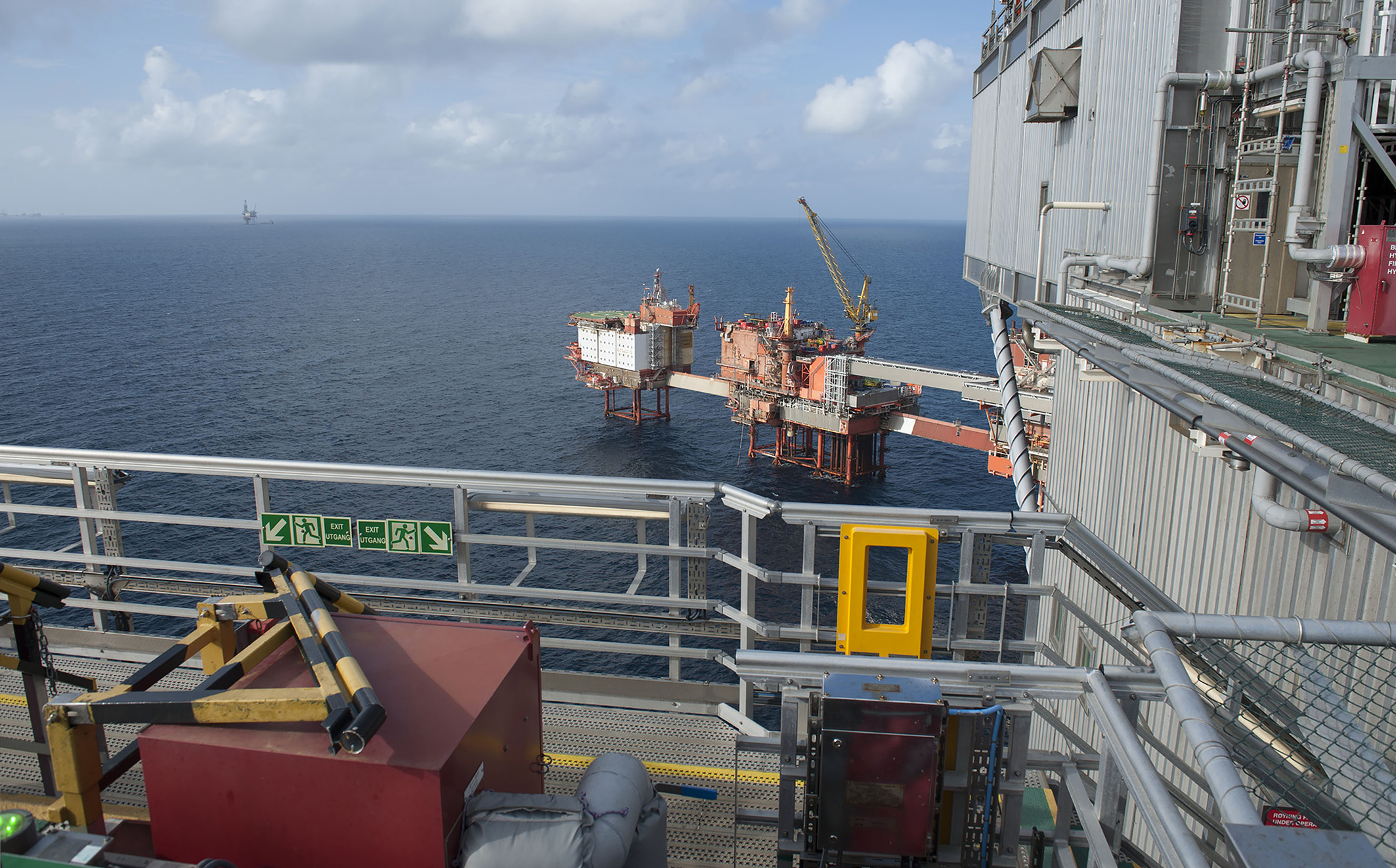 Innsynkning – utfordring og konsekvenser, forsidebilde, drift, Brann på PCP – en konsekvens av gamle installasjoner?
Innsynkning – utfordring og konsekvenser, forsidebilde, drift, Brann på PCP – en konsekvens av gamle installasjoner?It had become clear as early as 1984, only two years after Valhall came on stream, that the seabed over the field was subsiding through compression of the porous reservoir chalk. Caused by the decline in sub-surface pressure as production progressed, this meant the seabed was 5.7 metres lower in 2006 and the platforms were no longer at a safe height above the waves.[REMOVE]Fotnote: Proposition no 76 (2006-2007) to the Storting, Utbygging og drift av Valhallvidereutvikling. Read more about compression of the reservoir.
That December, BP applied to the PSA for exemption from these safety requirements. This was granted for the QP up to 30 September 2010 and for the PCP up to 31 December 2010. The exemptions were conditional on both platforms being evacuated when extreme weather was forecast. Meanwhile, the DP was allowed to continue working until 31 December 2015. As a result, the Valhall field was being operated under exemptions from the regulations granted by the health and safety regulator.[REMOVE]Fotnote: PSA, 24 December 2007, Samtykke til bruk av Valhall utover opprinnelig levetid.
The decision had been taken at that time to upgrade the field’s installations, both because of the subsidence and because the platforms were reaching the end of their design life. BP had assessed various options for ensuring continued operation, and the licensees resolved to proceed with a plan which involved building a new platform to replace the QP and PCP. The existing DP would remain operational until its continued use was no longer acceptable for safety reasons and/or economic considerations. A PDO for the work was submitted to the ministry on 22 March 2007, and the Storting subsequently approved this Valhall redevelopment (VRD) project.[REMOVE]Fotnote: Proposition no 76 (2006-2007) to the Storting, Utbygging og drift av Valhallvidereutvikling.
Fresh challenges
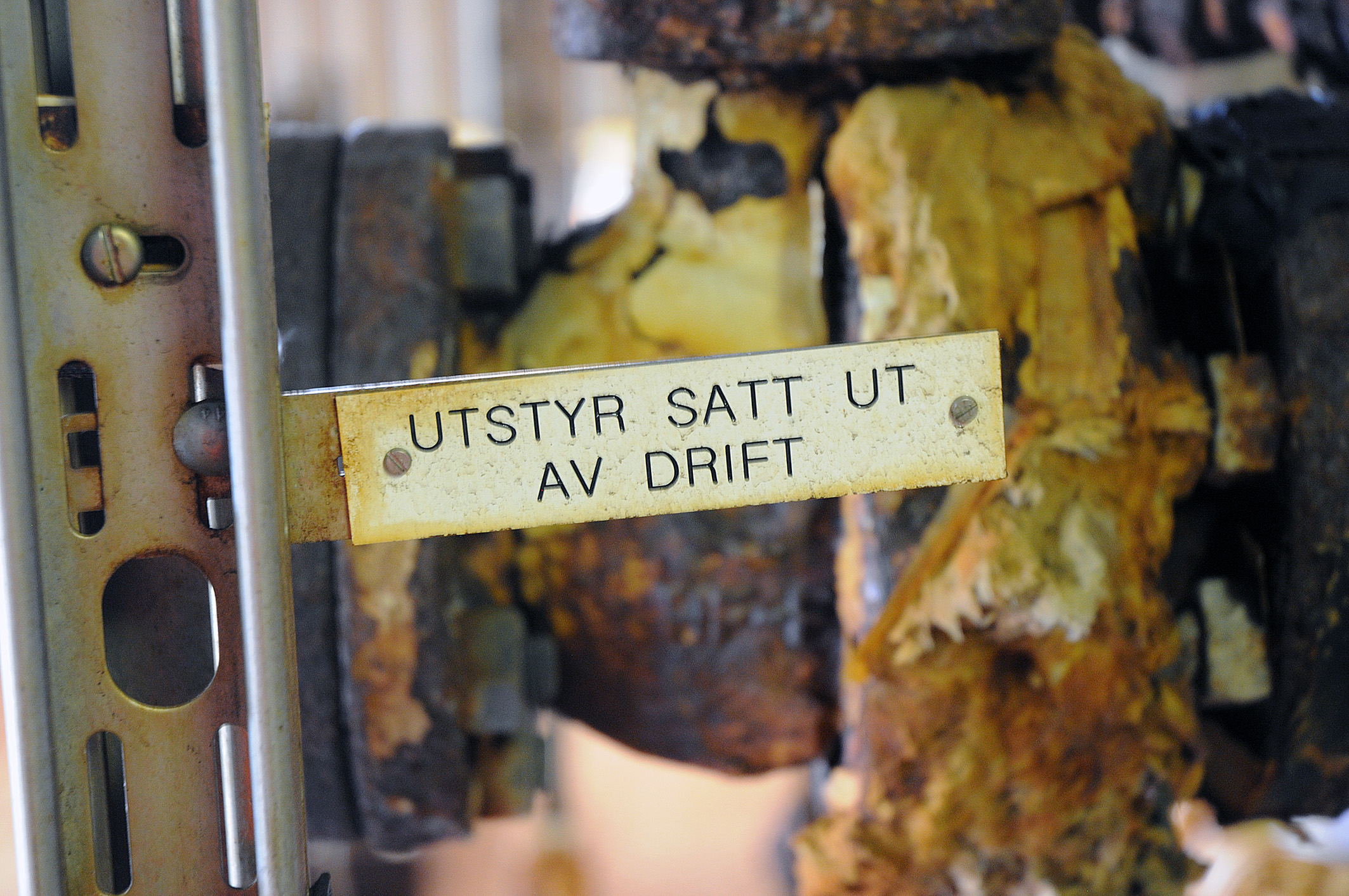 arbeidsliv, Brann på PCP – en konsekvens av gamle installasjoner?
arbeidsliv, Brann på PCP – en konsekvens av gamle installasjoner?Since the new platform was not due to come on stream until late 2010, an extension would be needed to keep the existing facilities going beyond the design life specified in the 1977 PDO. Before the PSA granted exemptions for these installations, it conducted an additional check of their technical and operational integrity. Maintenance management was also audited in 2008. All these inspections identified both nonconformities and a number of deficiencies, involving such aspects as documentation and the classification of systems and equipment. Programmes formaintaining safety- and production-critical equipment were also missing, while choices and priorities for maintenance and evaluating its effectiveness were deficient.[REMOVE]Fotnote: PSA, Tilsyn med teknisk og operasjonell integritet på Valhall , 22 December 2007, and Tilsyn med vedlikeholdsstyring på Valhall ,22 July 2008.
BP itself found 171 nonconformities on the QP and PCP, and 34 of these remained unresolved when a new application to postpone shut-down was submitted.[REMOVE]Fotnote: Teknisk Ukeblad , 15 July 2011, “Valhall-kompressor skullevært byttet ut i 2007”. The PSA nevertheless gave its approval. The problem posed by old and outdated platforms was not confined to Valhall. By 2010, about half of these facilities on the NCS had exceeded their design life. According to the PSA, corrosion and weakening of structural strength represented a safety risk.Older platforms often also presented work-related challenges such as noise, vibration and poor ergonomics. And components were more likely to fail.
The regulator adopted aging and producing-life extensions as a main priority in 2006, after official consent to use an installation beyond its design life had become required from 2002. Aging facilities had to have the same level of safety as new structures. Responsibility for ensuring that this was the case and for analysing and assessing health, safety and environmental protection in all activities rested with the operator.[REMOVE]Fotnote: Midttun, Øyvind, “Age of concern”. Safety, status and signals 2009-2010 , PSA, 10 February 2010. BP’s plan was to replace the QP and PCP with a new integrated production and hotel (PH) platform in 2010. But challenges with delivering the new quarters module and the scope of work in reconnecting to the new process facilities created delays. The PSA accordingly received new extension applications from BP, and once again consented to continued use of the QP until 1 September 2012 and the PCP to 31 December 2011.[REMOVE]Fotnote: PSA, Consent to use ValhallPCP beyond the planned lifetime , 21 May 2010.
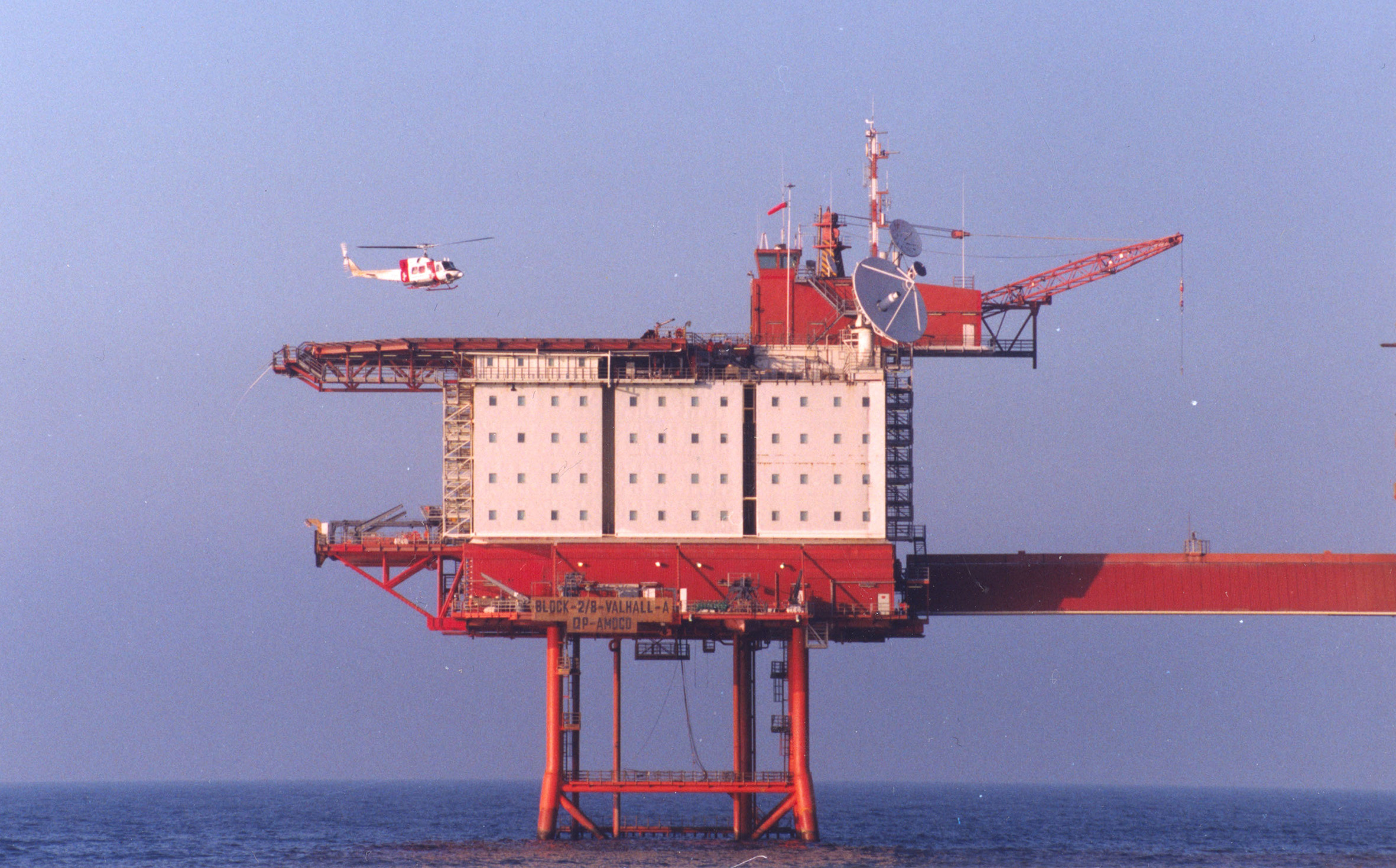 Boligplattformen QP, forsidebilde, feltet, Alarmen går… et utdrag hendelser på Valhall
Boligplattformen QP, forsidebilde, feltet, Alarmen går… et utdrag hendelser på ValhallBut the timeframe remained too short and a further request was made to use the QP until the end of 2014. This was granted yet again, but with a series of restrictions on residency. From September 2012 to 31 December 2014, the number of residents could not exceed 104 during the winter season from 1 September to 1 May, rising to 177 for the summer months.[REMOVE]Fotnote: Letter from the PSA to BP Norge AS dated 8June 2012, Samtykke gis til å bruke QPinnretningen på Valhall over opprinnelig levetid. The PCP also hadto be used for longer than planned. Delays meant that the deadline for shutting it down was extended to 1 September 2012.[REMOVE]Fotnote: PSA, Extended lifetime for Valhall facilities , 7 January 2015.
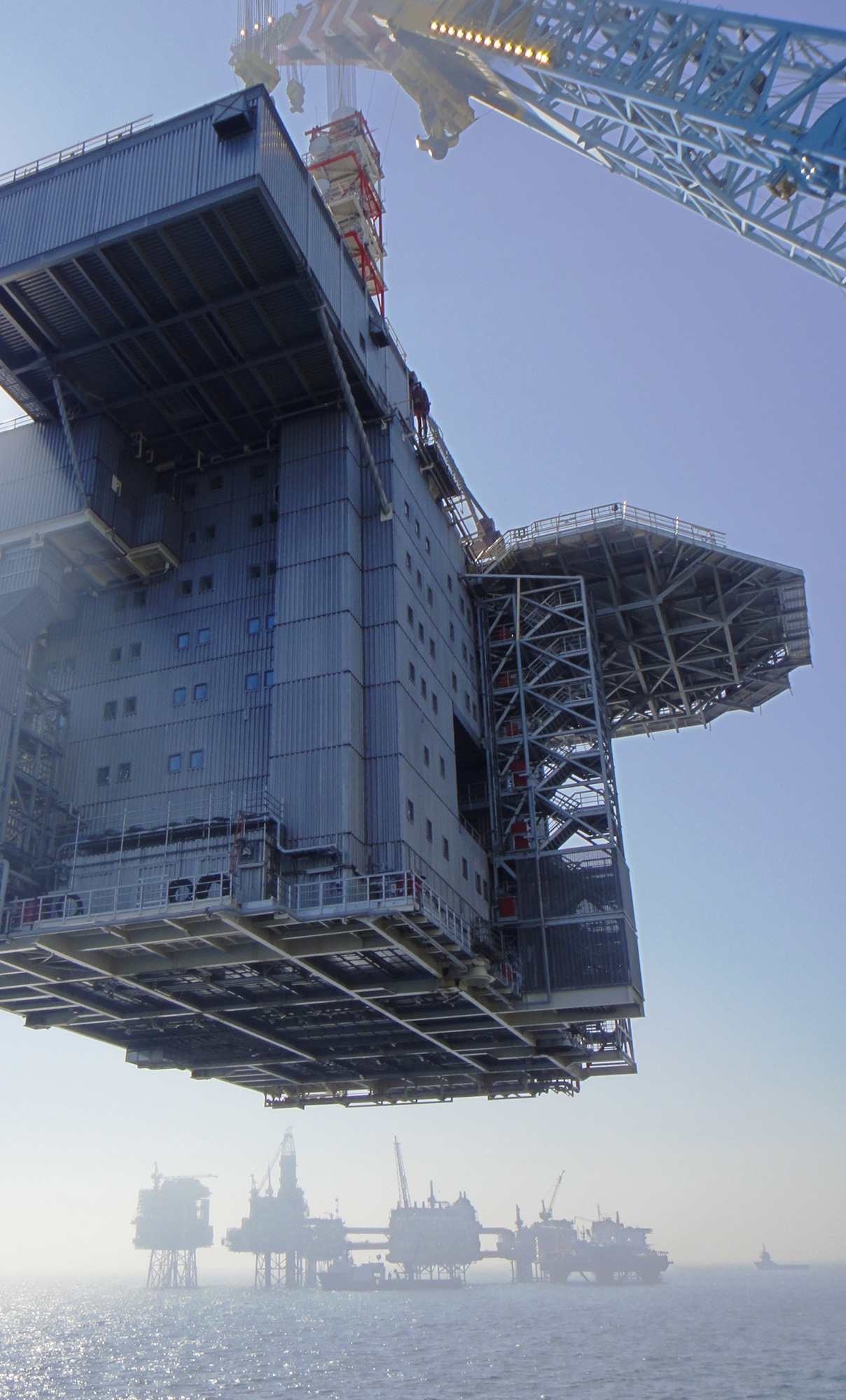 høybilde, historie, Brann på PCP – en konsekvens av gamle installasjoner?
høybilde, historie, Brann på PCP – en konsekvens av gamle installasjoner?Once the new PH platform was installed, plans called for the QP and PCP to be closed down, cleaned and prepared for removal from the field. The PCP jacket would be retained to support the bridge linking the former QP and the water injection platform (WP/IP). The DP would remain operational as long as this was profitable and safe. Nevertheless, the basis for approving the PDO was that wells would start to be shut in during 2014 and the redundant platforms were to cease operation by 2016 at the latest. So BP applied for and was granted exemptions to extend producing life several times, and the old facilities stayed in use for five years beyond their design life. Nor did they meet the safety requirements for wave heights. The fire which broke out in 2011 can accordingly be interpreted in light of several consecutive exemptions, with weakened maintenance as the result.
Fire and delayed maintenance
According to the PSA’s investigation, the PCP fire broke out in the compressor as a result of inadequate maintenance. A shaft fracture on a cooling pump in a crane engine room was the immediate cause. The engine lost coolant circulation, causing a minor blaze to break out. Red-hot particles from the exhaust vent were blown across to ignite flammable gases emerging from a vent stack for the compression modules.[REMOVE]Fotnote: PSA, Investigation report: fire on Valhall PCP on 13 July 2011 , 4 January 2012.
A glowing cinder about the size of thumbnail floating onto the bridge between the PCP and the WP was the first indication of the fire to be noticed. The person who saw it reported the incident to the senior mechanic, who in turn saw flames two metres high in the vent stack. White smoke was also blowing from the crane’s exhaust vent while it was in use. This was immediately reported to the central control room (CCR). Instead of initiating a general fire alarm, however, the latter asked the area technician to check the position. Only when the blaze was confirmed to be genuine was a general alarm sounded. No alarms were triggered by smoke or heat from the fire.
The crane driver had received no signals that anything was amiss when the CCR initiated an equipment shutdown, and accordingly went to check why the engines had stopped. Through the blue-black smoke filling the engine room, he saw a small flame from the diesel injector for one engine. He succeeded in extinguishing this with the aid of a glove. But the heat, possibly combined with an increase in exhaust fumes as a result of entrained water vapour, caused red-hot particles to be blown out from the engine’s combined spark arrestor and silencer. The latter devices had more or less rusted away. It subsequently transpired that the spark arrestor was not classified as safety-critical equipment and accordingly had no maintenance programme.[REMOVE]Fotnote: PSA, Investigation report: fire on Valhall PCP on 13 July 2011 , 4 January 2012.
According to the PSA, ensuring that this device functioned was crucial and its failure increased the probability of igniting leaks from the gas coolers – an incident with major accident potential. The wind had blown red-hot particles from the exhaust vent over to the vent stack for flammable gases from the compressors, causing the gases to ignite. This could have had major consequences. If the crane engines had not been shut down, the blaze in the engine room could have developed into a diesel fire. That would have caused piping for the diesel injectors to rupture and spray diesel oil on the exhaust manifold, leading to a much bigger conflagration and making it hard to evacuate the crane. The only escape route was a ladder next to the engine room door.[REMOVE]Fotnote: PSA, Investigation report: fire on Valhall PCP on 13 July 2011 , 4 January 2012.
It proved difficult to put out the fire in the vent stack. No automatic extinguishing systems covered the area, and it was considered too risky to send in personnel with hoses. No assessment of how to fight a fire there had been made, so it was decided to deploy a standby ship with FiFi water monitors to spray water on the flames. The fire was extinguished in just over 90 minutes, but no standby ship with FiFi monitors was included in the emergency response plan for Valhall. Although nobody suffered physical injury, the PSA considered that the fire could have led under slightly different circumstances to a serious condition on the platform. Production from Valhall was suspended for nine and a half weeks as a result of the incident.
Several nonconformities
The PSA’s investigation report identified several underlying causes for the accident on the platform, which displayed signs of a short remaining active life with improvement and upgrading projects receiving low priority. Maintenance management and follow-up of identified defects were found to be deficient, and the same applied to barrier management and risk assessment. That meant personnel had not trained with this type of incident, while extinguishing equipment was not permanently installed and uncertainty prevailed about the risk of escalation. Nor had the muster system been adjusted to reflect thein crease in staffing related to construction of the new PH facility and the Regalia flotel moored on the field.
When a general fire alarm sounded, the regulations required that all personnel had to be mustered, counted and readied for evacuation with 20 minutes. A head count during the fire showed that three people were missing. Two turned up after half an hour, but it took 70 minutes to account for the last person. When the PSA reviewed muster drills for 2011, it found that the personnel count had been implemented within the stipulated time on only nine of the 25 occasions. A number of the faults and nonconformities noted in the investigation report had been identified earlier. In 2008, for instance,the PSA complained about the absence of a maintenance programme for safety- and production-critical equipment and lack of maintenance priorities.[REMOVE]Fotnote: PSA, Investigation report: fire on Valhall PCP on 13 July 2011 , 4 January 2012.
The unions and the safety delegate service had also warned against extending the operating life of the facilities because problems often arose with the old equipment. They took the view that, had it been clear from the time of the first application in 2007 that the facility would be operated for five more years, the equipment would have been replaced right away. BP appreciated that there were things which could be improved and old equipment had to be renewed. Putting the new platform in place was nevertheless the top priority. Until then, personnel were evacuated when bad weather was forecast.
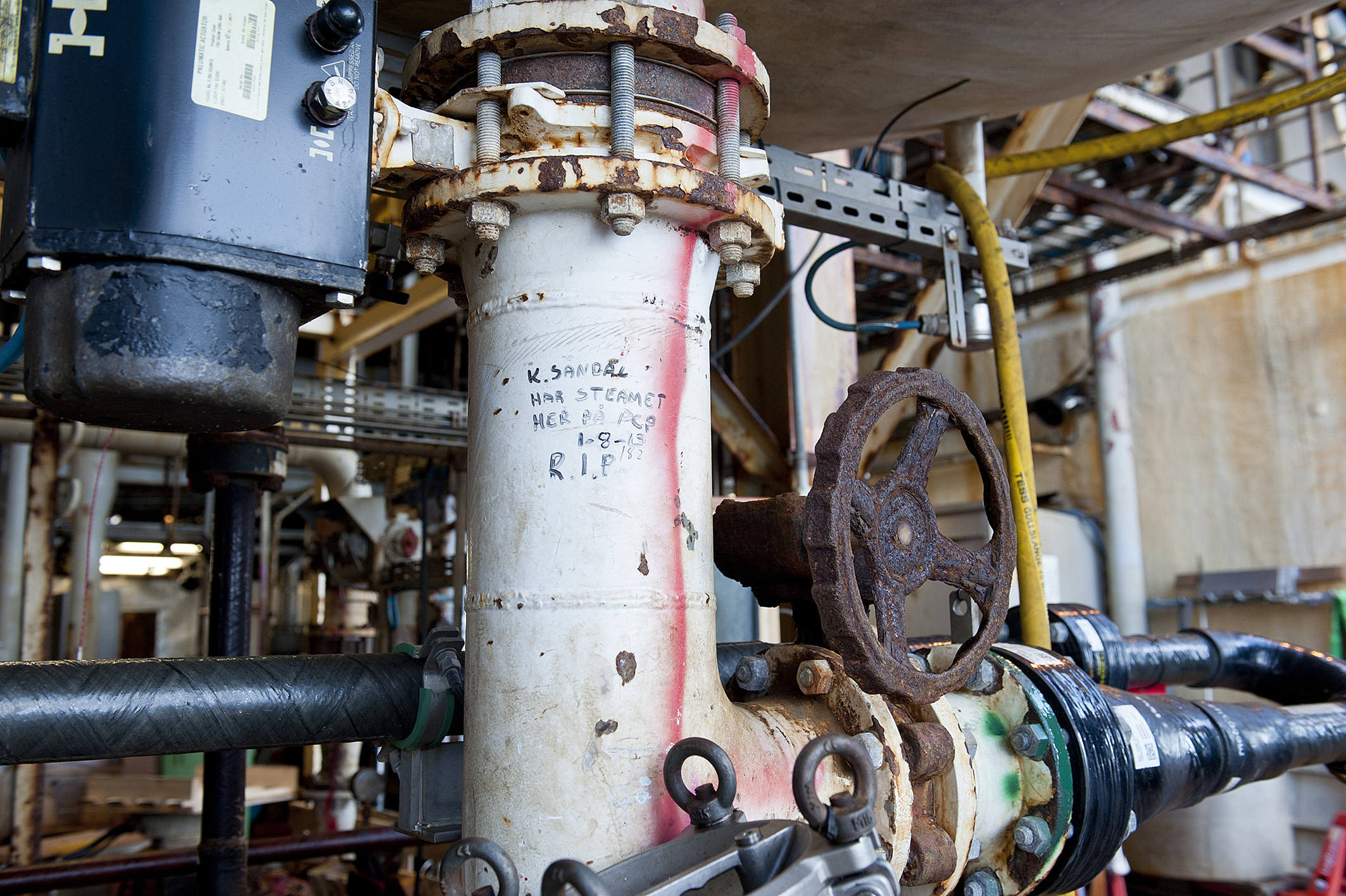 arbeidsliv, Brann på PCP – en konsekvens av gamle installasjoner?
arbeidsliv, Brann på PCP – en konsekvens av gamle installasjoner?